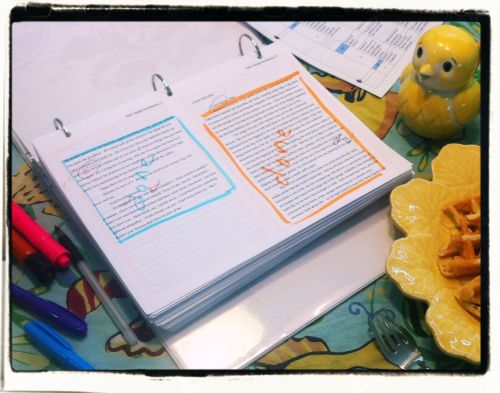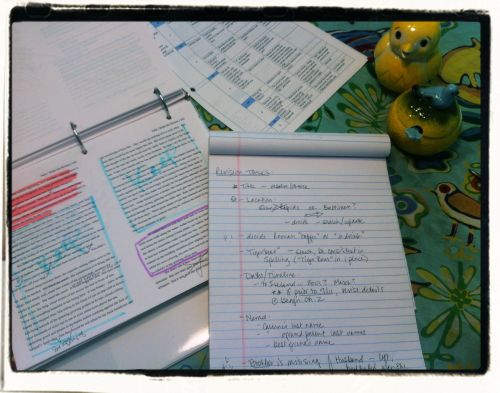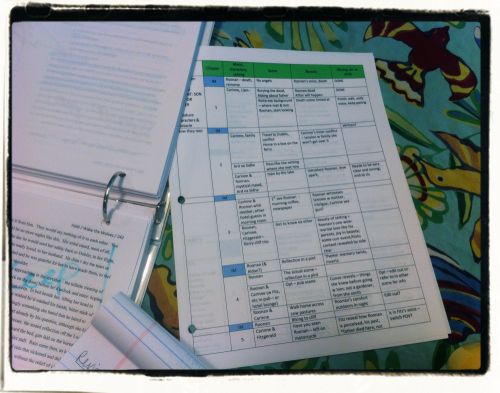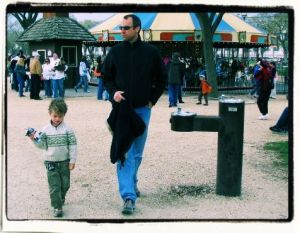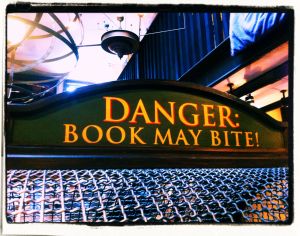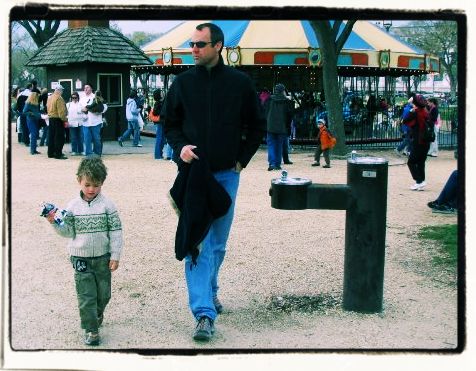
Some of you may know that I participate in a variety of writers’ groups online, which has been fabulous company and motivation as I pound through novel revisions this summer.
Novel Revision Process
I haven’t been posting about my writing process as often as I did last year, but regular readers may know that part of my obstacle is that I’ve taken on a daunting but very thorough revision process: rather than just continue tweaking draft 4-5, which I’d worked on through the winter, I am fully retyping the current draft. It has been an extremely effective process… but s-l-o-w, in the sense that it’s August 1 and I only have 24, 700 words in (last winter’s ms was 176,000).
What has been particularly exciting about the process is it has benefitted from the concentrated power of scenes written later in my understanding of the story, and I’ve been really excited, in particular, about the layer of meaning that have come about from expanding viewpoints.
I have been sharing about this regularly on Twitter (#SumNovRev), within Facebook groups and during daily writing activities at TeachersWrite! but have posted little about it here.
Sharing an Excerpt of the Work in Process
 That said, today I am sharing an extended scene from the last third of my novel in progress, Never Said. (I shared a short excerpt from this as part of Gae Polisner’s Friday Feedback; revision to this scene was prompted by character description activity on Kate Messner’s blog for TeachersWrite.)
That said, today I am sharing an extended scene from the last third of my novel in progress, Never Said. (I shared a short excerpt from this as part of Gae Polisner’s Friday Feedback; revision to this scene was prompted by character description activity on Kate Messner’s blog for TeachersWrite.)
About the Excerpt
Michael Roonan is an elusive main character as the novel takes place at a point in his life when he appears resigned to his own death despite the community around him absolving him from blame. He goes along with his best friend’s insistence that he go on the run, but there’s the unspoken undercurrent that he doesn’t disagree with the man who is after him (Sean). This excerpt is from Sean’s POV, but really is lead up to the reveal of secrets Roonan has been keeping all along.
I’ve written before about how I like to play around with POV, writing from several different viewpoints as I discover a story. This antagonist, Sean, was a fun surprise, as he had insights I hadn’t thought of. (Writing in Process: Using Alternative Voice to Understand Internal Conflict).
* * * * *
Excerpt from Never Said
(The following is an excerpt from an unpublished novel. Do no copy or use without express written permission from Elissa Field.)
Sean saw the back of Michael Roonan’s head from a distance, across the thin stream that split the village center. Mick turned toward the marketplace on the other side of the stone bridge. Wind lifted his hair and Sean saw his face in full profile. Definitely him. His hair was heavy, coarse with the filth of a man on the run. It calmed his anger to know Mick ran, no matter what he’d said. His hair grown out like the mane of a horse, so unlike himself.
Unrecognizable from the man he’d last met on the jetty south of Wicklow, when he’d watched Mick dive off the stern of a trawler, knowing he was avoiding the Garda whose lights flickered fierce off the roofs of their cars, parked in jackknifed formation at the entrance to the docks. Sean had grinned at him, unseen: They’re not for you, Mick. It’s a body washed up against the headwall. Coppers wandered bored as farm dogs, no hints yet if it were a murder or just a ferry jumper or a man washed overboard. So tedious, waiting on coroners.
He followed the intermittent bob of Mick’s head beyond the concrete breakers, carried far south by the inlet currents. He might have drowned, another body to be fished out, but sputtered out of the surf along the strand amid coarse grasses and weekend strollers. Sean watched him collapse. Waited. Mick pulled himself to sit facing out to sea as if what chased him was yet panting in the frothing waves. Not behind him in the car park, where Sean leaned back for a smoke. A think.
Shells or stones – he couldn’t see from this distance – rattled in the waves with a sound like dried bones. Mick’s hair was buzzed military-short, then. More stark than months Sean had seen him reported, imprisoned in isolation for all the players who wanted him dead.
This little man. Hunched along the shore line, thin thread of light blazing brilliant beneath the oyster shell gradations of the sky.
Water and sand fell from his shirt when he stood. He brushed kelp from his shoulder. Otter of a survivor. One summer in Ridell, there’d been one of the younger brothers – he was sure it was Mick –pulled in an undertow jumping off the tower at Blackrock. The black shadow of his head, like the back of a turtle or a skate, pulling deeper and sideways along the Irish Sea bottom that would be exposed, smelly with the decay of exposed mussels and whelks at low tide. Sean was the one to dive for him, a bolt through the current, wrenching him to the surface. Clear vomit of seawater sprayed over his forearm as he held the boy’s chin in the crook of his elbow, rolling onto his back, the boy buoyed on his chest as he waited out the current to let them go. The little brother’s head gagged and sputtered and cried, gasping for air. Struggled to get free, to swim, not knowing all you could do is relent and float until the current gave you up. “Easy,” he’d told the top of the boy’s head, fixing his face to the sky. “Look, there. See the gulls? How many is that?”
He was sure it was Mick. The Roonan son who covered his ears at the high engine whine of his father passing in a race, even as others took pictures or shook their fists to cheer.
There was no rush. Wait him out.
Mick’s head was down when Sean came upon him, nearly dried, on a bench along the roadside not quite into the adjoining village. Mick said, without looking up, without surprise, “How is it going for you, Sean? I’d heard you were out.” It was barely discernible: the faint shift of posture to check peripheral vision, clear enough one wolf to another, to be certain Sean was alone.
“You killed Stephen.”
There was a long silence. Cars passed, their headlights bilious green in the odd fog come in from the sea. That color got to him, always – color of the dead boy in the canal – and he wanted to shake Mick, to shake the whole world, the way Man and Ulster vibrated in the high-revved videos of Gerry Roonan at 200 miles per hour. How did Mick take this for granted? How did he not know how lucky he was, for what he had? Him and Stevie: they’d be famous racers, just like their da. What hate makes you blow that all apart? For what? Not even a cause.
Mick turned fully to him, no avoidance in his eyes. “I killed Stephen.”
“What the fuck, Mick. Can’t you even deny it to me?.. Why? Why would you do that to your own brother?”
Roonan didn’t answer that. Not yet. “How did you know?”
“I watched you. I saw you do it, you stupid fuck. Watched… I saw him…”
Both were in it, then. Graphic memory. Two men, brothers to Stephen in different ways, watching from opposite sides as the universe sucked inward on Stephen then exploded infinitely outward. The only two to have seen it plainly, true. Night stills for them as it does in sacred moments, letting damnation seep in.
“Why the fuck did you do it?”
A man climbs fully inside his eyes when come upon his truths. Sean knew as he stared into Mick’s face waiting for an answer: it was there. Mick was walking around inside it as if visiting an old room, testing what was remembered, what was broken, what was new. He wanted to punch him, deflate silence by crushing his head like a collapsed football. Fury at such deliberation, such unhurried reflection. Michael was a big man now: past twenty-two Sean guessed, strong from pulling nets on the trawler, taller than Stevie would have been. He’d heard stories of Roonan crushing an undercover cop’s head against a rock to stop the man from beating an informant. He’d heard rumors of his calm shadow in a doorway being enough to scare off provo gunners.
“You need to run, Mick.”
The man’s eyes rose to his face, but he was not there. Somewhere else, some other time, and a chill went through Sean. Remembering the boy in the hedgerow, when Rodgers hit the tree. Sean and Stevie and Mick were the first to the body, the racer’s attached hand still opening and closing in a fist, as his severed arm was further down across the road. The man’s eyes met their three faces through his visor, pleading for help. Mick would have been just eight when he heard that first gasping groan of a body giving up life, and his father’s road racer had passed them just after, front wheel lifting in the air at the surprise of finding Rodgers’ spent machine broken apart across the road, then whining away up Perry’s Hill.
He did not give away the gun tucked into his waistband. Did not acknowledge he could pick up a rock or that broken sign post just feet away and bash his skull. Could have done it then, that evening, as the high pressure sodium lighting came on over their heads, lighting them in a glow as if good friends reminiscing before walking home from the pub. He said as if he had yet to make a plan, so Mick had the benefit of a warning: “You need to run, because I’ll have you dead for it.”
Mick had stood. His feet were bare, having kicked off his white rubber fishermen’s boots when they filled like anchors with the sea. He looked up and down the street like an animal dropped from a car, dazed and recalibrating for home. He took a step toward the street to read a sign, he looked back to the car park where he calculated Sean’s car was parked. “I know you will,” he said to Sean. “But I won’t run. Not when you come.” Mick met the man’s eyes, held them to be certain Sean understood, and he’d walked off slowly in the direction of the main road.
If you want to share your feedback in the comments:
If anything resounds with you, do click “like” or leave me a comment to let me know what you liked — it’s hard and lonely work, so I will love you forever for any encouragement. Seriously. Of course, the impact may be lost a little, since this piece is from 2/3 through the book, and some details may reference earlier chapters (for ex: “hedgerow” is a frequent reference to where the boys stood when watching Roonan’s father race motorcycles) — but still, find kind words to let me know if any of the scene didn’t work for you and why.
* * * * *
What About You?
What are you working on this week? Are their aspects of your writing process or writing community that help you get it finished?
* * * * *
If you like this blog, be sure to subscribe using WordPress’s follow option or via email, or the Bloglovin button in the sidebar. I love to connect with like-minded readers and writers!
More on this site:


 Found on Pinterest: Plot Timeline Infographics
Found on Pinterest: Plot Timeline Infographics














 Fab Writing Community
Fab Writing Community





